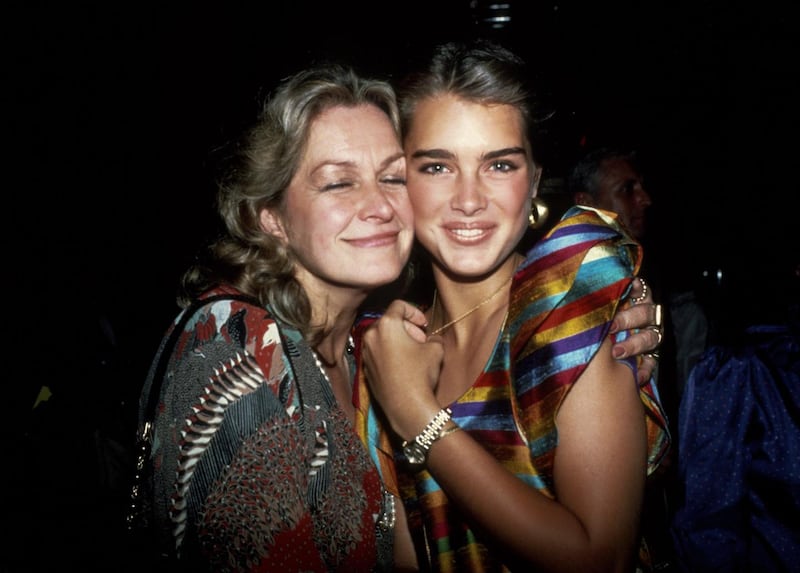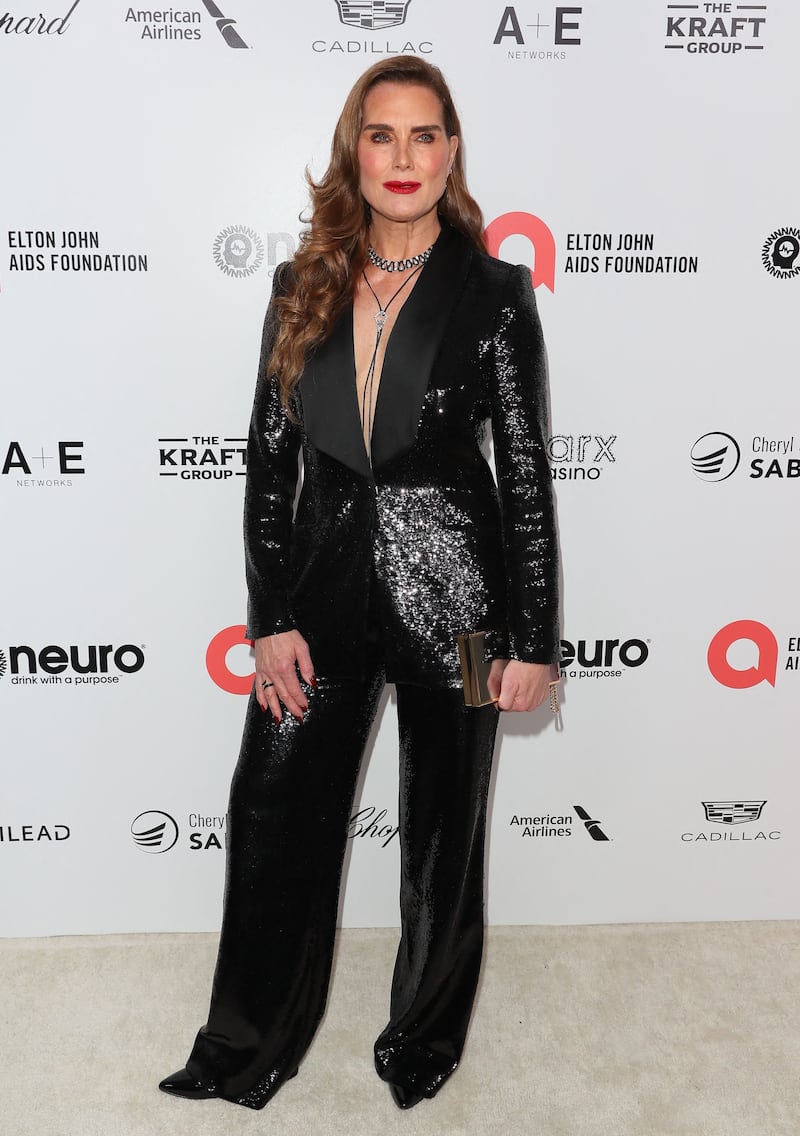What is the price of great, commercially celebrated beauty? What pain and loss accompany it? And what happens to a young girl turned into an icon before even hitting puberty? These key questions are addressed in Pretty Baby, a thoughtful and moving documentary about Brooke Shields that premiered on Monday.
Shields was a generational touchstone of the 1970s and 1980s, an omnipresent vision – in magazines, television ads and films – of astonishing natural beauty. Luminous deep-blue eyes under those famous dark brows, delicate features, dimpled smile and a glossy brunette mane. By the time she was a preteen, her look had developed – or rather, been groomed into – an improbable blend of Renaissance angel and vamp.
She was a living contradiction, conveying both doll-like innocence and premature, sexualised knowingness. At 11, playing a child prostitute in Louis Malle’s film Pretty Baby, she was required to do a kissing scene with actor Keith Carradine, then 29. At 15, she starred in Blue Lagoon, an Adam-and-Eve tale of castaway teenagers discovering sex on a deserted island. (The director of Blue Lagoon tried to sensationalise the film further by intimating, falsely, that the young Shields had lost her own virginity during production. “They wanted to sell my actual erotic awakening,” Shields says ruefully in the documentary.)

At 16, Shields started appearing in her infamous Calvin Klein ads, twisting and writhing on the floor in skintight blue jeans and reciting suggestive dialogue she now admits she barely understood.
READ MORE
In one of these spots, Shields stares seductively at the camera and declares: “I’ve put away childish things and I’m ready for Calvins.” Then, weirdly, she sticks her thumb in her mouth, casts her eyes downward and screws up her face to cry. The sexy, Calvin-ready woman morphs into a distraught toddler.
As Shields and others in the film remark repeatedly, ads and films like these would never be permissible today. But how far have we really come?
As the film makes clear, Shields was really just living a troublingly heightened, more public version of contradictions that have always lain at the heart of beauty and commercial culture: We use beautiful young women’s sexuality to sell products (including films); we conflate the women with the products; we imagine women need to be ever newer, younger and shinier – like products. As a result, we grow inured to seeing barely pubescent girls presented as “things,” as erotic commodities. (Driving the point home, the film features an old television ad for toys made in Shields’ likeness, with the tagline “Brooke Shields: She’s a real living doll.”)
The film offers many examples of the exploitation, abuse (and one outright sexual assault) suffered by Shields, from toddlerhood through her young adulthood. She was raised by a loving but troubled (and alcoholic) single mother, Teri Shields, who also served as her manager, and Brooke Shields understood early that her career provided the family’s sole income.
In her professional life as well, Shields was forced to handle – largely on her own – the outsize, inappropriately adult demands of the film, television and modelling industries. “The system had never once come to help me, so I just had to get stronger on my own,” she says.
Most disturbing, though, is just how well Shields coped with it all as a youngster, even after her Lolita-like roles started spurring outrage in the media. Repeatedly, the documentary shows the young Shields on TV talkshows, responding to prurient and judgmental questions with astonishing poise, grace and maturity.
“Do you understand, Brooke, how parents feel about the kind of attention you’re getting?” Phil Donahue asks about the Louis Malle film.
“I did it just as another job, I didn’t take it seriously, like I was going to grow up to be a prostitute or anything.” Shields responds. Pressed by another interviewer to comment on whether Teri Shields’ face “bears the mark of the heavy drinker,” Brooke Shields calmly denies it and suggests that her mother suffers instead from “allergies.”

Shields’ uncannily adult persona remained as impeccable and serene as her appearance. But there is a static quality to her in these clips, a blankness suggesting the practised deflection of disturbing emotion, as if being treated constantly as an object had nearly turned her into one.
Shields says that she often detached herself from reality, especially in acting, when called upon to perform a mature sexuality with which she had no experience. Recounting director Franco Zeffirelli’s attempts to extract from her, 16 and a virgin, a scene of erotic “ecstasy” in the film Endless Love, Shields recalls: “I just dissociated.” (Off camera, to try to simulate passion, Zeffirelli repeatedly twisted Shields’ toe, causing her to cry out and contort her face in pain.) In such moments, she says she was “zooming out, seeing a situation but you are not connected to it. You instantly become a vapour of yourself.”
Eventually Shields overcame this vaporous existence, largely through the saving grace of a college education. Encouraged by her professors at Princeton to voice her own opinions, Shields says she “learned I could think for myself,” which “morphed into this big rebellion.”
She set boundaries with her controlling mother, discovered her untapped talents for comedy and dance (with which she could break free of those beautiful blank-slate roles) and, for the first time, found a boyfriend.

These early liberations paved the way for Shields later to overcome other challenges (she speaks frankly about her divorce from her first husband, Andre Agassi, about her struggles with infertility and post-partum depression) and to attain success both professionally (starring on Broadway and on television) and personally (a second, happy marriage and two teenage daughters).
At its heart, though, this is the story of the terrible toll that sexual and commercial objectification takes on women. Of how relentlessly young girls – especially those born fitting into our idea of beauty – can be seized upon, monetised, objectified and ground down. Of how female sexuality so easily turns into a transactional commodity.
As triumphant and moving as Shields’ story is, Pretty Baby is also a cautionary tale, a clear demonstration of how magnetically fascinating beauty always is. When Shields’ image is on the screen, it’s almost impossible to look away. It’s that magnetism that everyone wants to bottle and sell. It’s what launched her career. It’s what makes this documentary possible.
Some of the last scenes feature Shields at home with her daughters, who speak with admirable self-awareness and knowledge about their mother’s early exploitation and how wrong it was. “Everything is different now,” one of the girls declares with touching confidence.
The documentary can be watched on Disney+ in Ireland.
This article originally appeared in The New York Times.
2023 The New York Times Company














